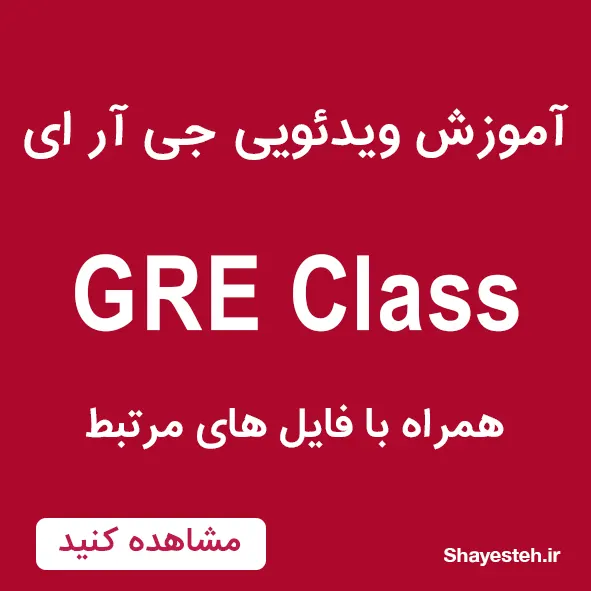در صورتی که اشکالی در ترجمه می بینید می توانید از طریق شماره زیر در واتساپ نظرات خود را برای ما بفرستید
09331464034
Topic:
Governments should offer a free university education to any student who has been admitted to a university but who cannot afford the tuition.
Write a response in which you discuss your views on the policy and explain your reasoning for the position you take. In developing and supporting your position, you should consider the possible consequences of implementing the policy and explain how these consequences shape your position.
دولت ها باید به هر دانشجویی که در دانشگاه پذیرفته شده اما توانایی پرداخت شهریه را ندارد، تحصیلات دانشگاهی را رایگان ارائه دهند.
پاسخی بنویسید که در آن درباره دیدگاه های خود در مورد این سیاست توضیح می دهید و پاسخ خود را در رابطه با موضعی که اتخاذ کردید تشریح کنید. برای توسعه و حمایت از موضع خود باید پیامدهای ممکن ناشی از اجرای این سیاست را در نظر گرفته و توضیح دهید چطور این پیامدها، موضع شما را شکل می دهد.
موافق
- این پیشنهاد باید به عنوان یکی از دستورالعملهای اصلی توسط وزیر علوم در نظر گرفته شده و اجرا شود چون آموزش و تحصیلات دانشگاهی رایگان برای افرادی که استعداد قبول شدن در دانشگاه را داشته اند و تلاش کرده اند، یک حق است و فقط نباید به این علت که آنها توانایی پرداخت شهریه را ندارند، نادیده گرفته شود.
- در صورتی که از اقشار ضعیف جامعه حمایت شوند تا تحصیلات رایگان در دانشگاه داشته باشند، آنها میتوانند در آینده برای جامعه مفید باشند و به جای تبدیل شدن به افراد بیکار که هزینه های بسیار بالایی را بر جامعه تحمیل میکنند، به فرد تحصیلکرده ای تبدیل شوند که که در زمینه های مختلفی به جامعه کمک می کند.
- در صورتی که دولت از افراد با استعداد حمایت مالی کند تا تحصیلات رایگان داشته باشند، آنها بدون دغدغه مالی میتوانند روی آموزش خود تمرکز کرده و به مدارج بالا دست پیدا کنند.
- با حمایت مالی دولت از اقشار ضعیف جامعه و فراهم آوردن چنین امکاناتی برای تحصیلات رایگان آنها، اعضای خانواده به مدارج بالای تحصیلی رسیده و میتوانند شغل مناسبی پیدا کرده و کمک خرج خانواده خود باشند. به این ترتیب فاصله طبقاتی بین اقشار ضعیف و غنی جامعه نیز به تدریج کمتر میشود.
- تصویب کردن و اجرای سیاست هایی مثل آموزش رایگان برای تحصیلات دانشگاهی اقشار ضعیف جامعه می تواند به رشد و پیشرفت جامعه کمک کرده و جمعیت بیکاران و مشاغل کاذب مثل دستفروشی را کاهش دهد.
مخالف
- تحصیل رایگان فقط نباید مختص اقشار ضعیف جامعه باشد، تمام افرادی که در یک جامعه زندگی می کنند و با گذراندن آزمون های مربوطه مثل کنکور برای ورود به دانشگاه استعداد خود را ثابت کرده اند حق دارند که از آموزش رایگان بهره مند شوند.
- تحصیل رایگان اقشار ضعیف جامعه هزینه بسیار زیادی را به دولت تحمیل می کند. بنابراین در کنار این سیاست باید سیاست های دیگری مثل کار کردن برای دولت به همان میزانی که فرد به تحصیل رایگان با خرج دولت پرداخته نیز در نظر گرفته شود تا از این طریق بخشی از هزینه هایی که دولت برای تحصیل رایگان دانشجویان کرده جبران شود.
Strategies
To get started, break down the statement and identify the assumptions made.
Statement Breakdown
a) Governments – The proposed policymakers
b) University Education – The subject of the policy
c) Low–Income Students – The proposed policy targets
Assumptions:
a) Governments have an obligation to help low–income students.
b) The number of students who fall into the category postulated by this claim is reasonable enough that the government can afford to offer a free education.
c) Students who cannot afford tuition will be able to afford to apply to a university.
After breaking down the statement and identifying assumptions, come up with pros and cons (or statements for and against) the topic given. You do not need to pick a side yet but knowing potential counterarguments will help you to develop a stronger essay once you do.
Pros and Cons:
Pros
a) Students who would be able to attend university with this government–sponsored program would have better career/income outcomes.
b) European countries currently offer this, with seemingly high success rates.
c) Governments have an obligation to support their people.
Cons
a) It is unclear what would happen if a student was admitted to multiple universities and could afford some but not others.
b) The number of students that this would pertain to likely would not be financially feasible for the government.
c) Attending university for free is not the only indicator of success in low–income college students.
Examples:
Include examples in order to make your essay as strong as possible. These are some potential routes you may take when choosing examples:
a) History contains many examples of arguments that support either side of this policy.
b) European countries that have “free tuition” models may have examples that support or oppose this policy.
c) Recent legislation in the US that aims to develop this policy may have examples that support or oppose this policy.
Finally, come up with an outline of your essay. This may feel like it slows you down, but your essay will benefit from having an underlying structure.
Sample 1:
Education has been strongly linked to increased income and better career prospects across the board. However, there are some groups within the United States who are unable to attain higher education by attending a university because they are unable to afford the tuition. The policy proposed here asks that the government offer free tuition for any student who has been admitted to a university but who cannot afford the tuition. While this may seem to be a good policy proposal initially, this proposal could stand to benefit from increased specificity in implementation. It is currently unclear whether this program would cover tuition fees for a program that a student has been admitted to and cannot afford if the student has also been admitted to a program that they can afford. In addition, the number of students that this would likely pertain to may not be financially feasible for the government.
The vast majority of universities offer financial aid programs for students who cannot afford full tuition, and at most universities less than half of the student body pays full tuition at any given time. Given this, it is not uncommon for low–income students to be offered financial aid packages from schools that they have been admitted to in order to give them the financial opportunity to attend. However, not all financial aid packages can be afforded by the student, even with the reduction in cost. In the event that a student was admitted to two universities, one that provided enough aid for the student to be able to afford to attend and one that did not, this policy implies that the student would receive free tuition for the program that he or she cannot afford, in spite of the fact that they have been admitted to a program that they can afford. This policy should be amended to state that free tuition is only offered if the student is admitted to a program that he or she cannot afford and has not been admitted to any other programs that the student can afford. Otherwise, this may lead to wasteful spending for students who wish to attend universities with higher tuition but cannot afford to do so.
Along this line, a significant portion of the US population qualifies as “low–income” to the point where it is unlikely that they would be able to afford to attend a university. While the US is a relatively wealthy country, it is unlikely that the federal government could afford to cover that amount of tuition fees without having to make sacrifices within other areas of the discretionary budget. This program would then quickly be disbanded, leaving matriculating students who were previously supported by government funding with no financial ability to remain a student at that university. Some limitations would have to be put in place on this policy to restrict the number of people that the federal government would sponsor (similar to standard scholarships) in order to ensure that the government would be able to fund the selected students throughout their college careers.
Giving a low–income student the opportunity to attend a university has the potential to permanently change their life for the better. However, the implementation of policy to reach this end must be mindful of the financial limitations of the federal government and focus on students who cannot afford to attend any university without external support instead of students who cannot afford to attend a particular university. With these changes, this policy has the potential to result in positive consequences for low–income students.
Sample 2:
Education plays an important role in the overall development of a child. For the harmonious transformation of a student into a responsible citizen, education must be made mandatory at least at the elementary level. To impart education to all, it should be made free at school level.
However, making college and university education free may yield adverse results. Students, as they pass high school and reach college are quite grown up and aware of their aptitudes. There may be many who would rather go in for a professional or vocational course. Others may be more interested in business. The ones left out would be genuinely interested in academics. By making university level education free, more and more students would be tempted to get enrolled. This can result in unemployment in future as lesser vacancies would be available for the large number of qualified students. To tackle unemployment, government would have to adopt various methods like entrance exams etc. which are not very reliable in selecting the meritorious and deserving students.
Moreover, due to shortage of appropriate posts, the more qualified ones may have to settle down for jobs that do not honor their capabilities and hard work put in for the acquired degrees. This will not only demoralize the overqualified ones, but also distort the image of university education in the eyes of new aspirants.
College and university education, if made free, will heavily burden the government financially. It will be not only difficult to provide the best of facilities like good libraries, laboratories, scientific and sports equipments etc. but also challenging to pay the hired staff and faculty. In the wake of lesser salaries, less and less people would be interested in joining the faculty. If the deserving candidates would not be paid justifiably, then there will be deterioration in the quality of education imparted. Making education free at university level may also reduce the standards of education as students may develop a laid back attitude and may not feel the necessity to clear the courses at the earliest. This will further deteriorate the standard of education and create a huge backlog of students for the government to entertain.
Apart from the financial difficulty in paying the staff and providing appropriate facilities to the students, there will be yet another challenge for the government to look after the other employment channels.
Although education is a must, there are other skills required too in different fields. If all these skills are explored and promoted well, only then can a nation be more independent financially. The works of handicrafts, interior and fashion designing, sports, farming, etc. are just a few to mention that need the government’s assistance to flourish to the fullest. To be unbiased towards all streams of talent and employment, the government will be under pressure to make all these trainings free as well. This will be a difficult task to accomplish. Thus, making the university level education free will put a lot of economic strain on the government.
Making university and college level education free will be beneficial neither for the government nor for the citizens in the long run. Thus, instead of making the university education free, the government should adopt other ways of channelizing the talents of the youth and also keep a check on private institutions overburdening the students by high fee structure.
نظرات کاربران
هنوز نظری درج نشده است!


